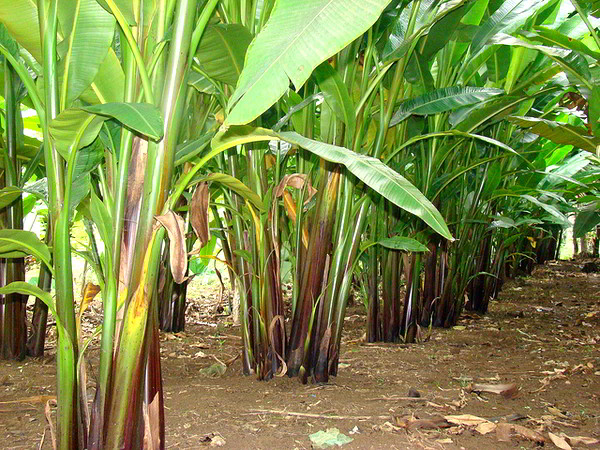Pacol, a wild variety of banana and a close relative of saging na saba, was used to create a disease-free breed of abaca.
In a project dubbed “Production of High Yielding and Virus-resistant Abaca Hybrids”, experts were able to do this by using molecular markers in a biotechnology process called genetic engineering. This collaborative project among agencies such as the Department of Science and Technology’s Philippine Council for Agriculture, Aquatic and Natural Resources Research and Development (DOST-PCAARRD), University of the Philippines Los Baños (UPLB), Institute of Plant Breeding (IPB), and Department of Agriculture-Biotech
Abaca Hybrids

The project is part of the DOST’s commitment to provide S&T solutions that will address gaps in the major stages of production.
According to the project leader, Dr. Antonio Lalusin Jr. of IPB in UPLB, the project worked on the development of molecular markers to assist in the hybridization of bunchy top virus free abaca.
Dr. Lalusin said that the pacol variety, endemic in the Bicol region, has been used by breeders for hybrid purposes. Lalusin’s team made use of the resistant gene marker of pacol by cross breeding it with abaca and then breeding it back to pure-bred abaca.
“Through the use of gene markers, the selection process for the bunchy-top resistant genes of pakol was significantly reduced,” said Dr. Lalusin. “While the conventional breeding takes 10 years or so, we were able to produce resistant abaca in about five years or less using modern genetic technologies.
The bunchy top virus is the most injurious among the three diseases that affect abaca in the country. Aside from lowering the quality of harvested fibers, this virus also hinders the growth of infected abaca, resulting in no harvest at all.
The project also aims to increase good quality fiber yield by about 0.2 MT/hectare through the use of hybrid abaca plants. This translates to an additional 14,488MT of good quality harvest or roughly Php 579.5 million in revenues.
The team also targets to mass produce 2.5 million hybrid plantlets through tissue culture by 2014. Currently, the project houses about one million tissue cultured plantlets in different stages of growth in their laboratory, greenhouse and field trial station.
The top ten abaca producing regions, most of them hit badly by typhoon Yolanda, will be given planting materials to revive the industry.
Currently, the local abaca industry holds 85 percent share in the world market, with the Bicol region contributing about 36 percent production.
Abaca, commonly known as Manila hemp, the country’s premier fiber, is known worldwide for its incomparable tensile strength. Commonly used as clothing and footwear materials in the past, abaca’s application has expanded to sophisticated industries such as production of pulp for specialty papers such as currency notes, stencil papers in addition to textiles, handicrafts. Today, abaca fibers are being used by car manufacturers as automobile composites.
However, there is an increasing threat of disease incidence in the country, in addition to losses due to typhoons and other natural calamities. Viruses such abaca bunchy top, abaca mosaic, and abaca bract mosaic are the top three being studied on. Millions of pesos are lost to said diseases, with as much as 23 million pesos in Bicol alone.
Written by Arjay C. Escondo S&T Media Service, DOST-STII
